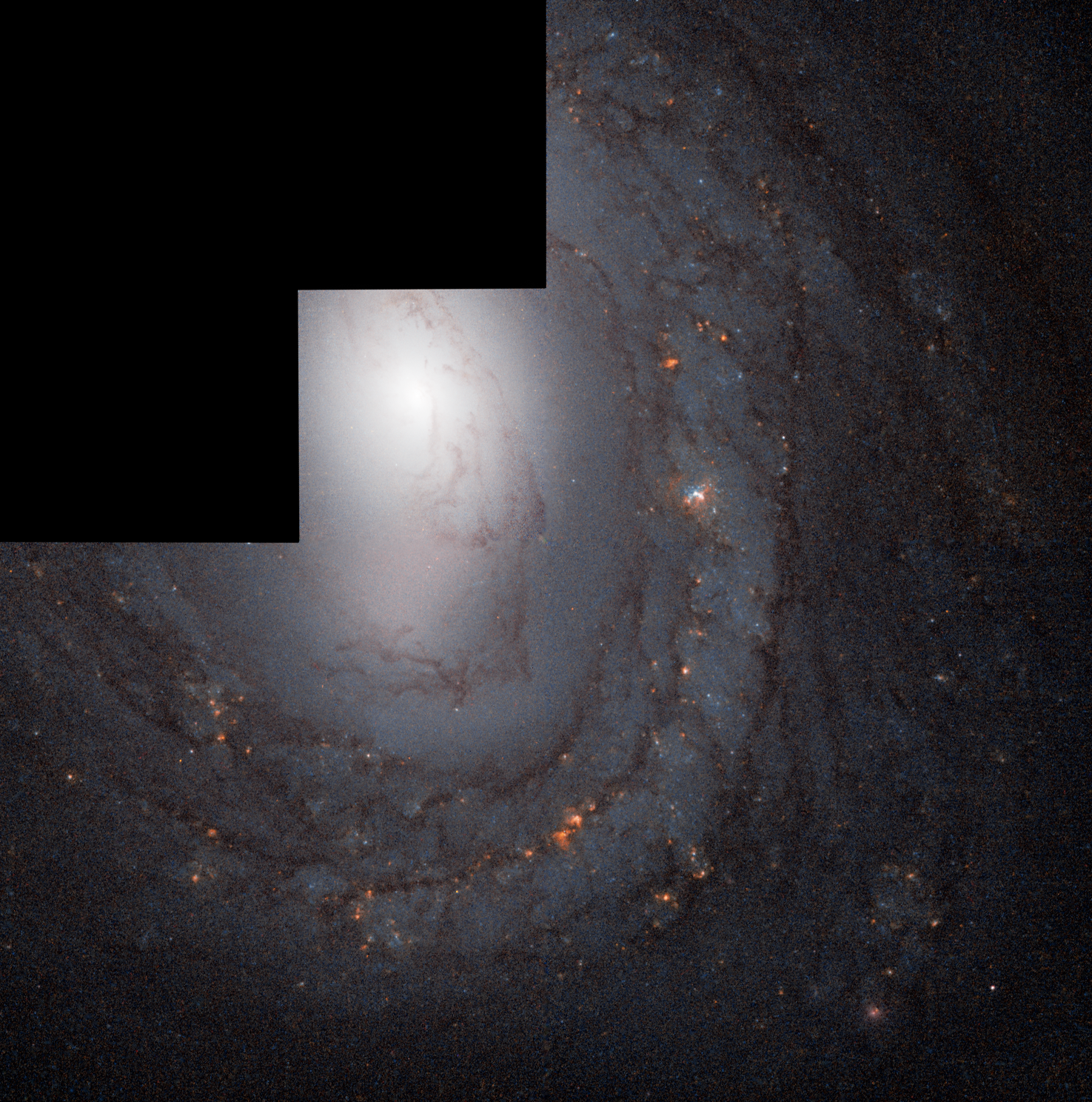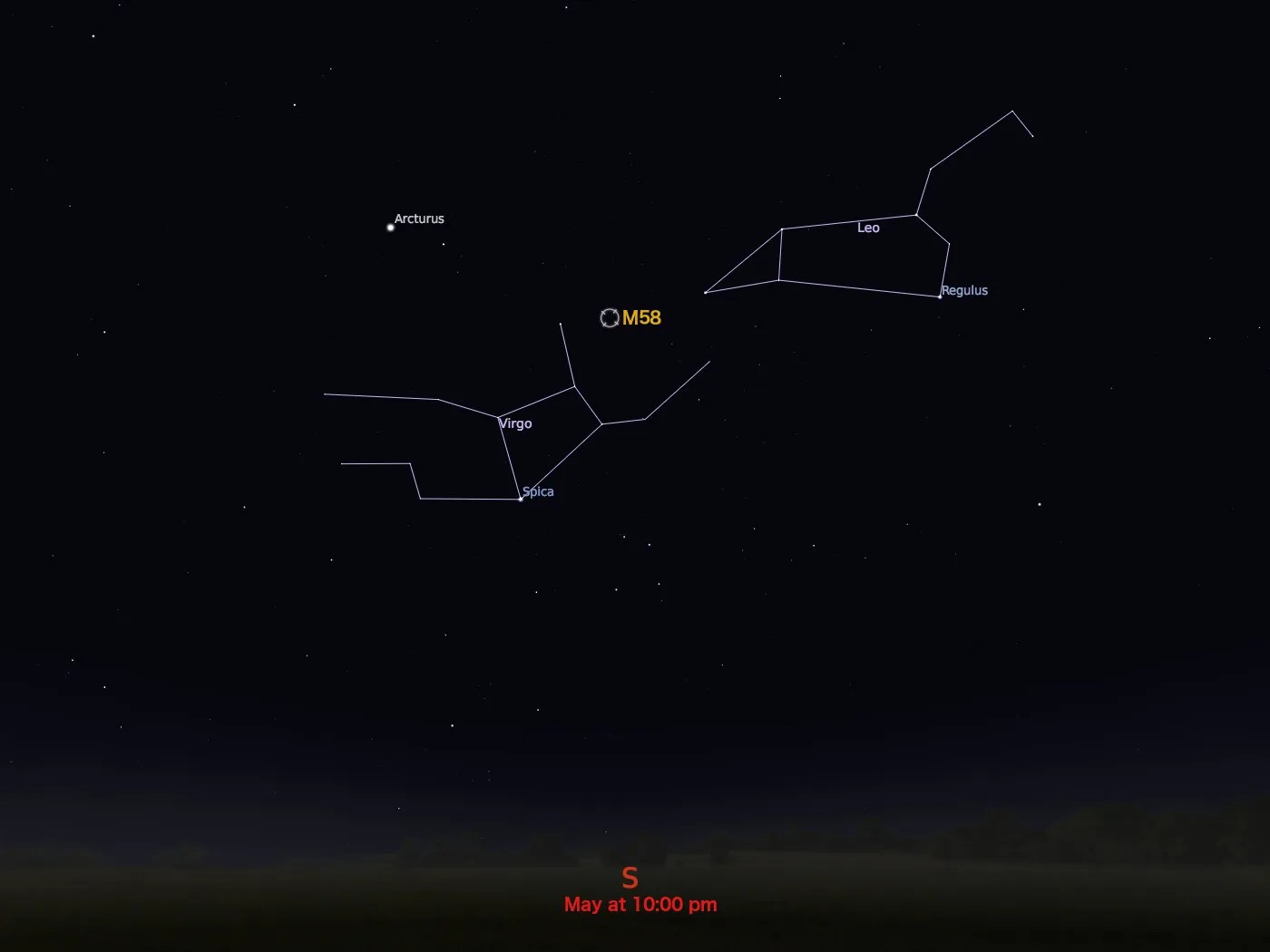Messier 58
Messier 58 was one of the first galaxies recognized to have a spiral shape.
Distance
62 million light-years
Apparent Magnitude
9.8
constellation
Virgo
object type
Barred Spiral Galaxy

Discovered in 1779 by Charles Messier, M58 was one of the first galaxies recognized to have a spiral shape and is one of four barred spiral galaxies in Messier’s catalog. M58 is one of the brightest galaxies in the constellation Virgo. Located roughly 62 million light-years from Earth, M58 is the most distant Messier object.
Although it appears bright, M58’s core is relatively dim compared to other spiral galaxies. The core contains high rates of star formation, known as starburst activity. It also houses a supermassive black hole around 70 million times the mass of our Sun. A very small ring around the galaxy’s nucleus, known as an ultra-compact nuclear ring, is a main region of widespread starburst activity in M58 and is a rare phenomenon among galaxies.
Long arms extend out from the galaxy’s bright nucleus. However, a lack of hydrogen means that there is very little star formation activity in the arms. This could be the result of gravitational interactions with the nearby galaxies of the Virgo cluster. Two supernovas have been detected in M58, one in 1988 and the other in 1989.
The best time to view M58 is in May. With a magnitude of 9.8, the galaxy is best observed with an 8-inch or larger telescope, but it can be seen with large binoculars on clear nights as well. Small telescopes will only reveal the galaxy’s core.
This Hubble observation was taken in ultraviolet and visible light using the Wide Field and Planetary Camera 2. The image’s stair-step appearance results from the design of the camera. It shows about half of M58, with the galaxy’s core and arms filling the image. Hubble took these observations of M58 to study the properties of its nucleus (classified as a LINER, or low-ionization nuclear emission-line region) and compare it with active galactic nuclei in the centers of other galaxies.

Explore Hubble's Messier Catalog
The following pages contain some of Hubble’s best images of Messier objects.

Messier 1 (The Crab Nebula)
Better known as the Crab Nebula, Charles Messier originally mistook Messier 1 for Halley’s Comet, which inspired him to create…

Messier 2
Hubble's image of Messier 2 is comprised of visible and infrared wavelengths of light.

Messier 3
Messier 3 holds more than 500,000 stars.




